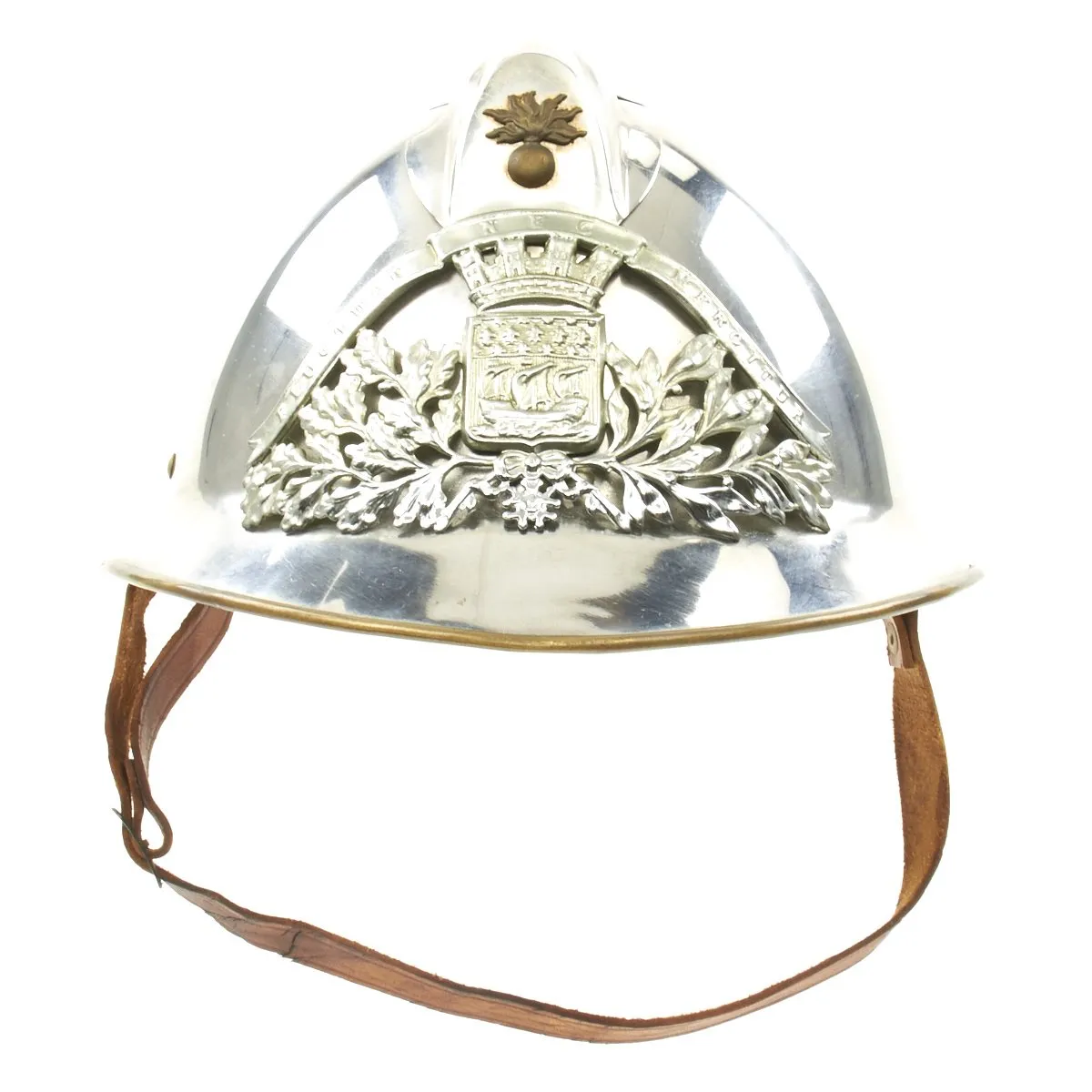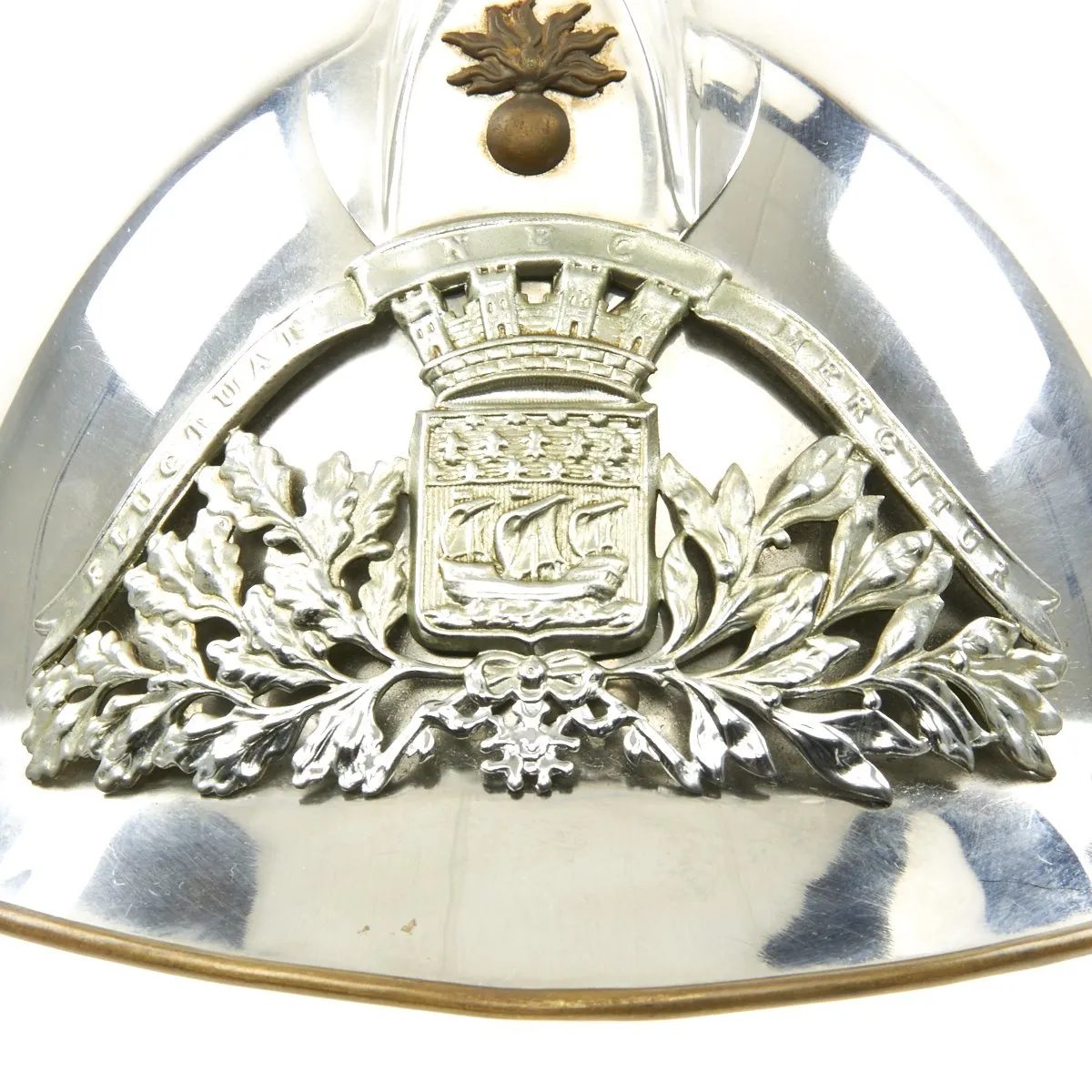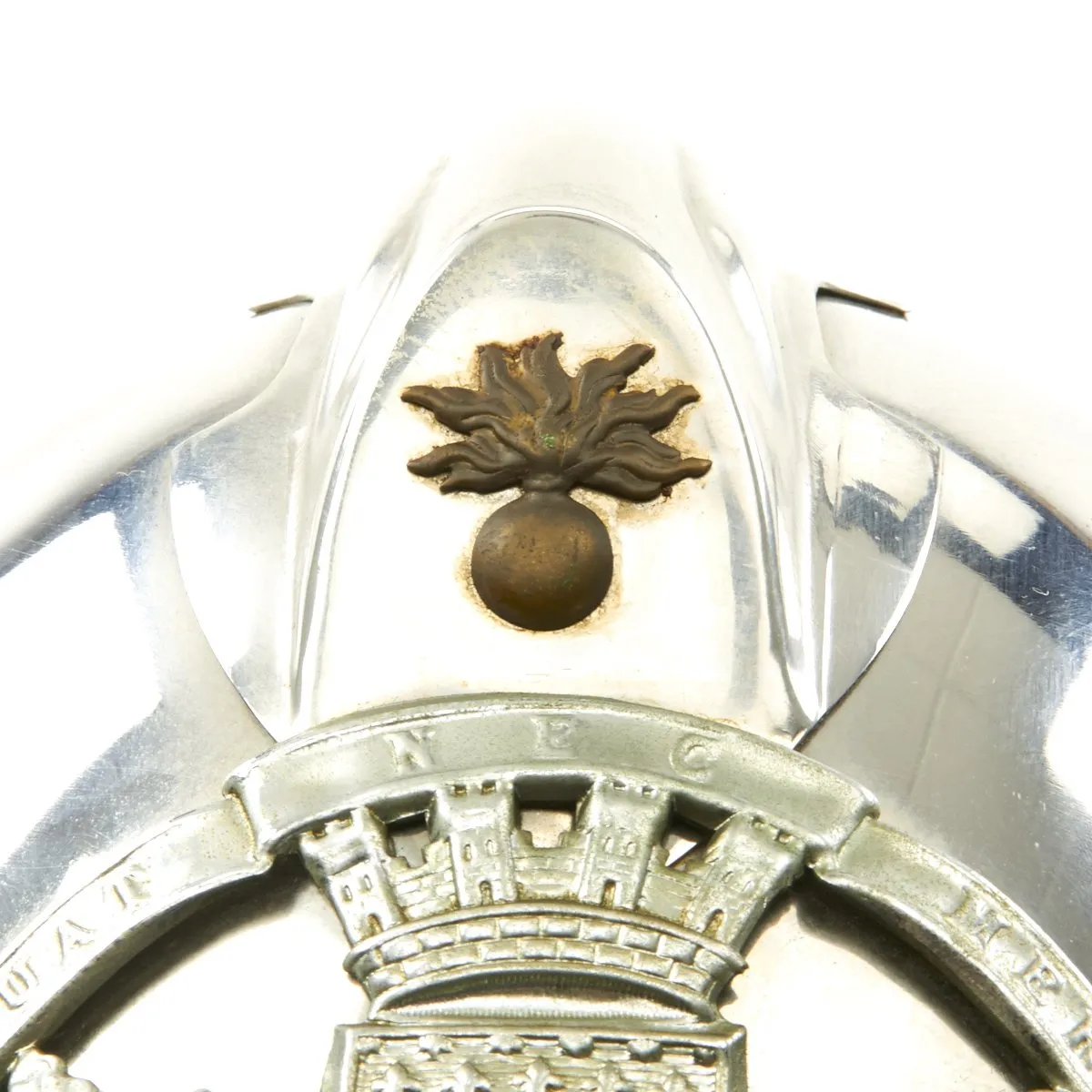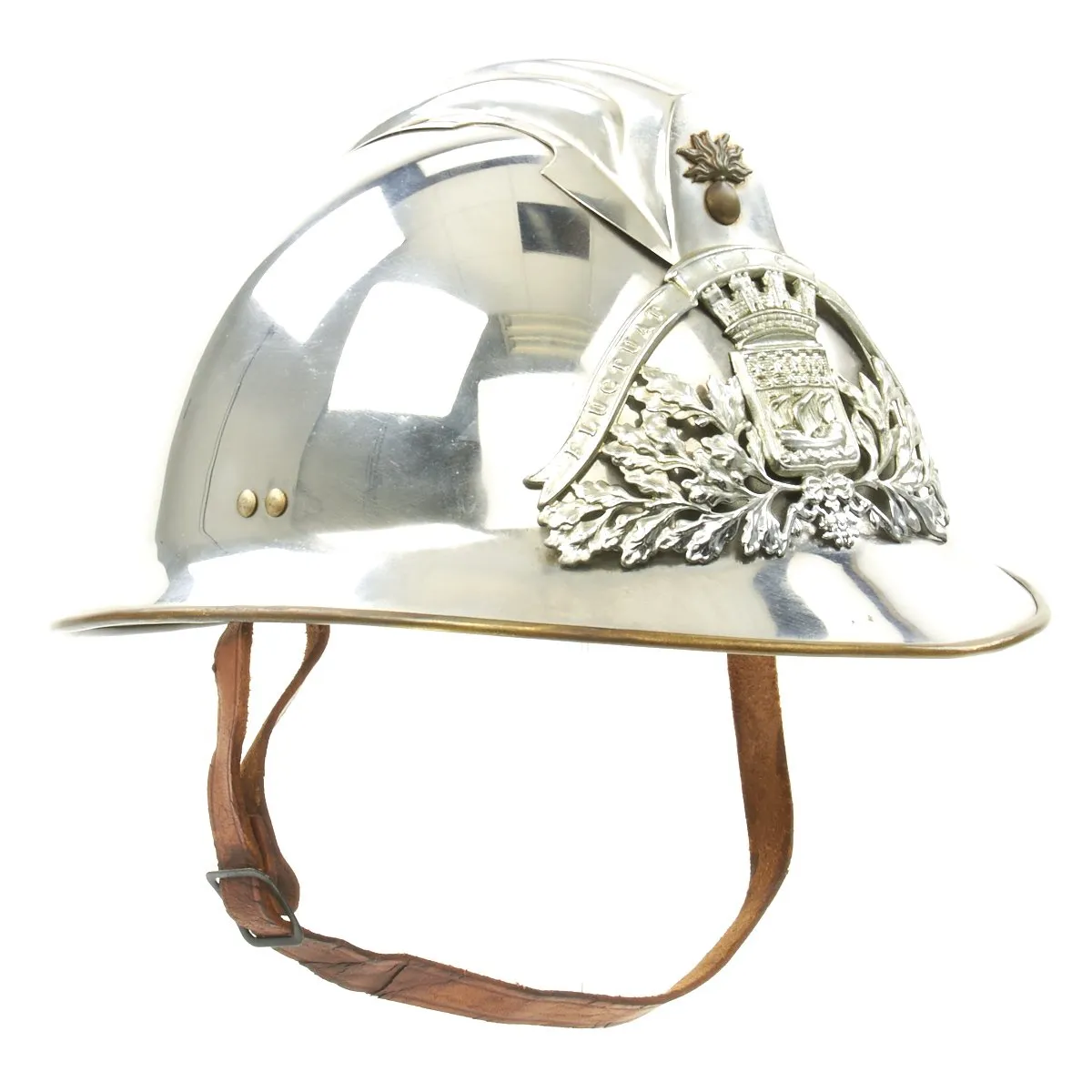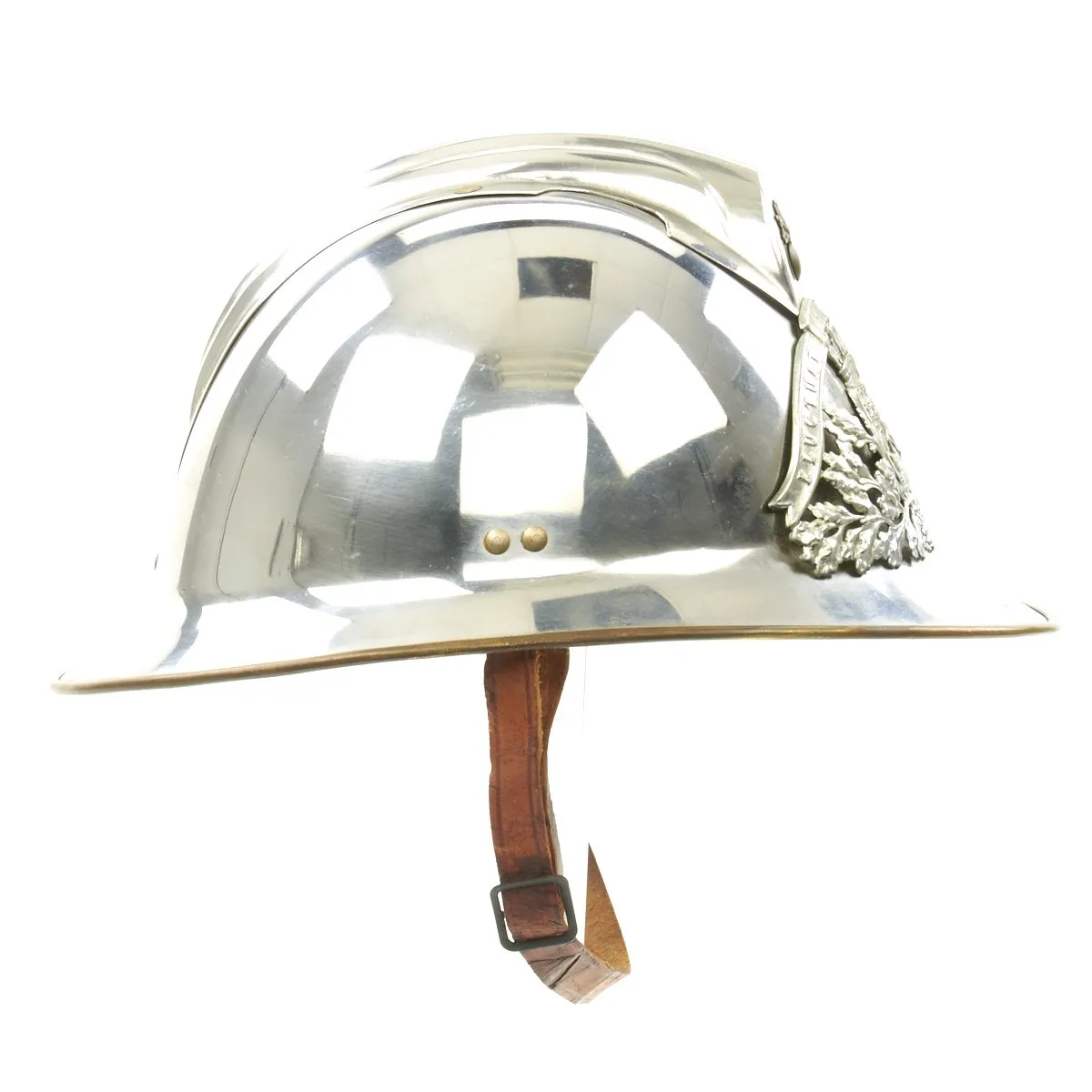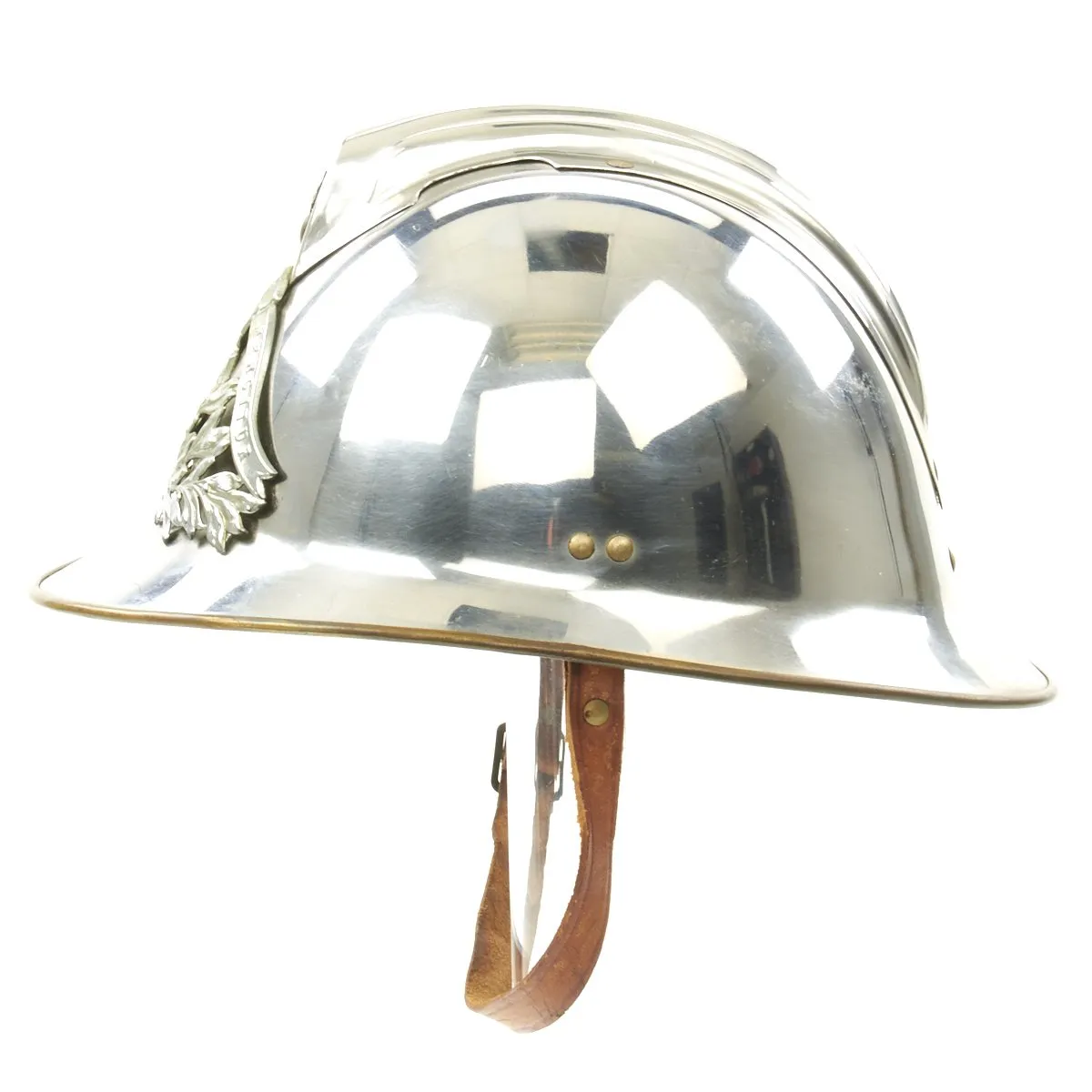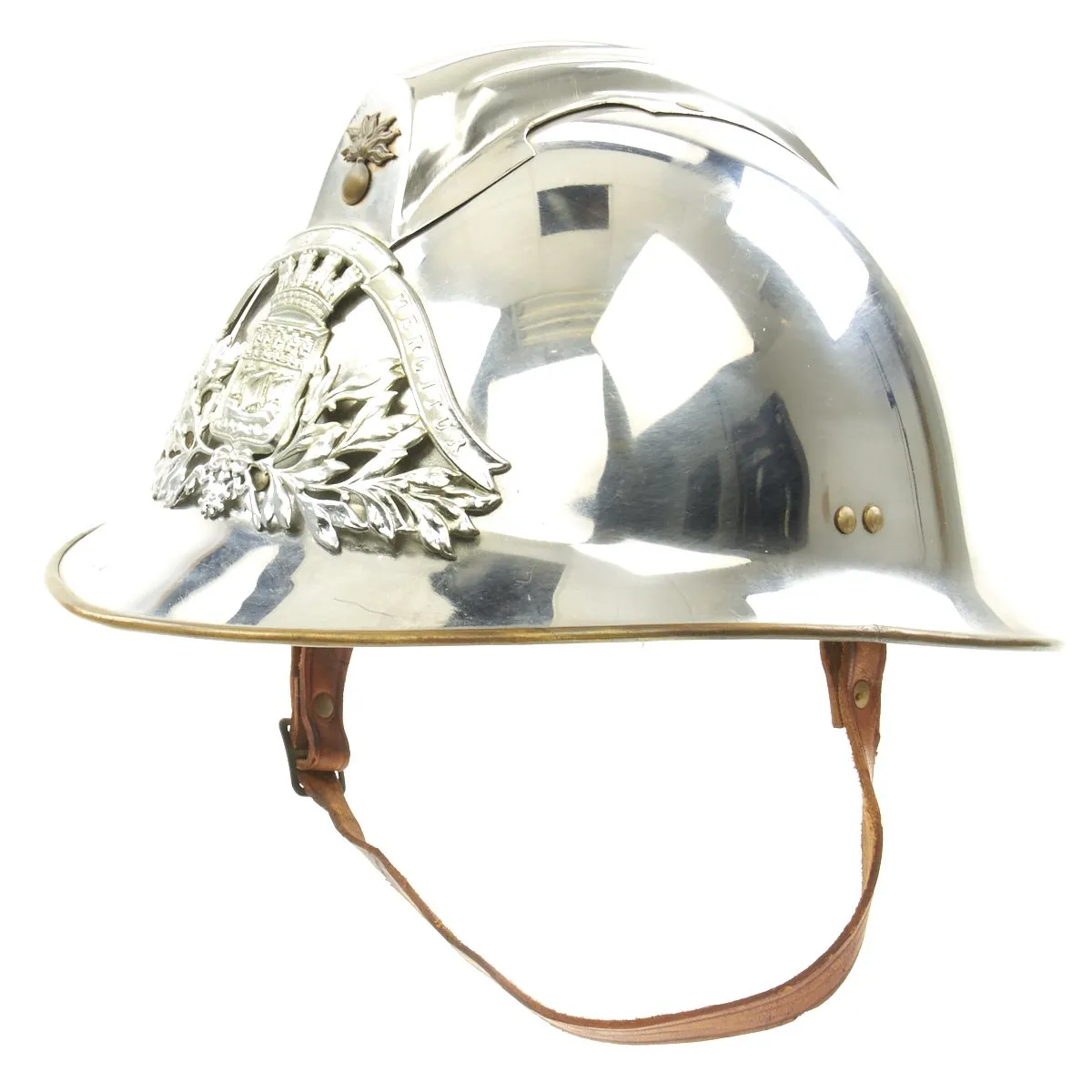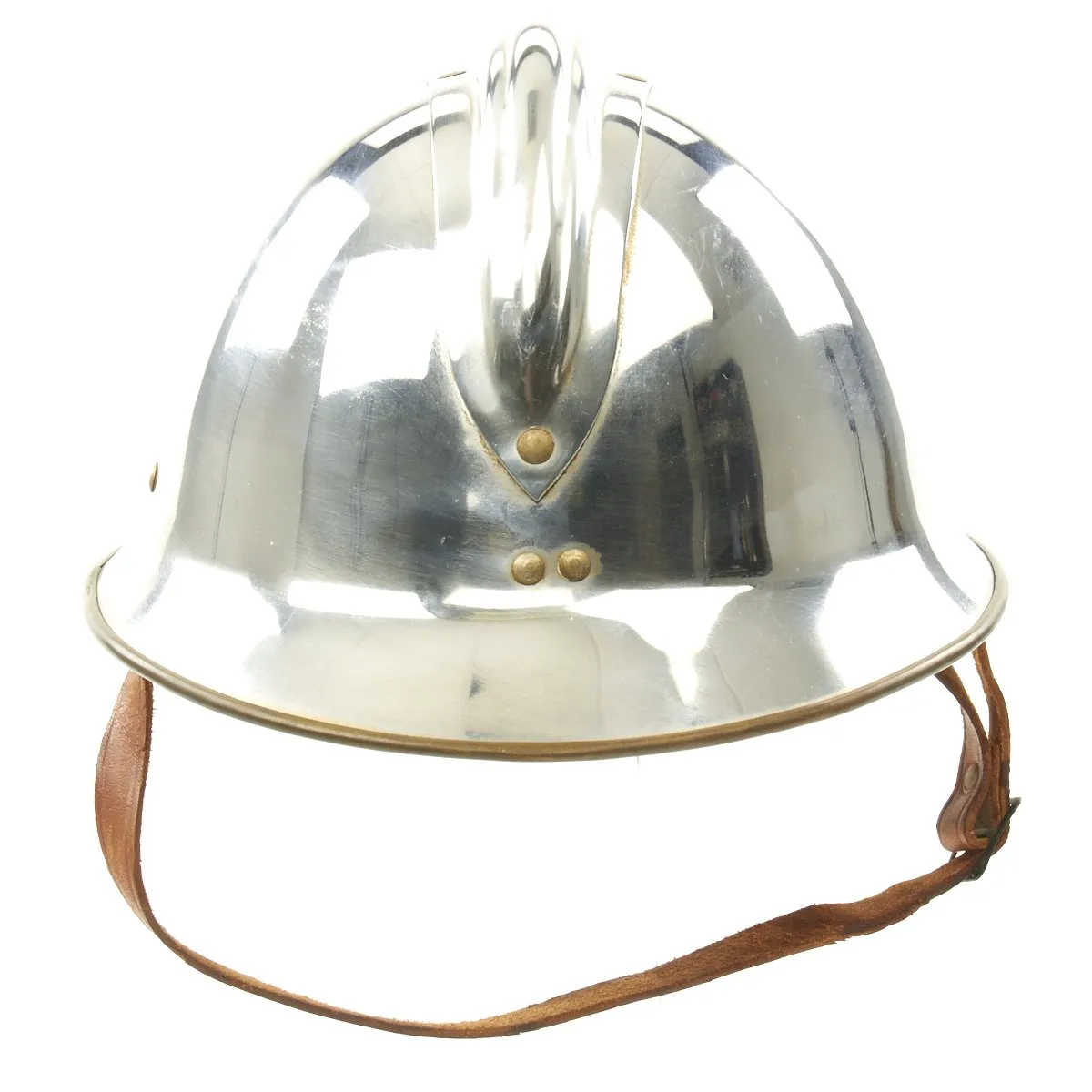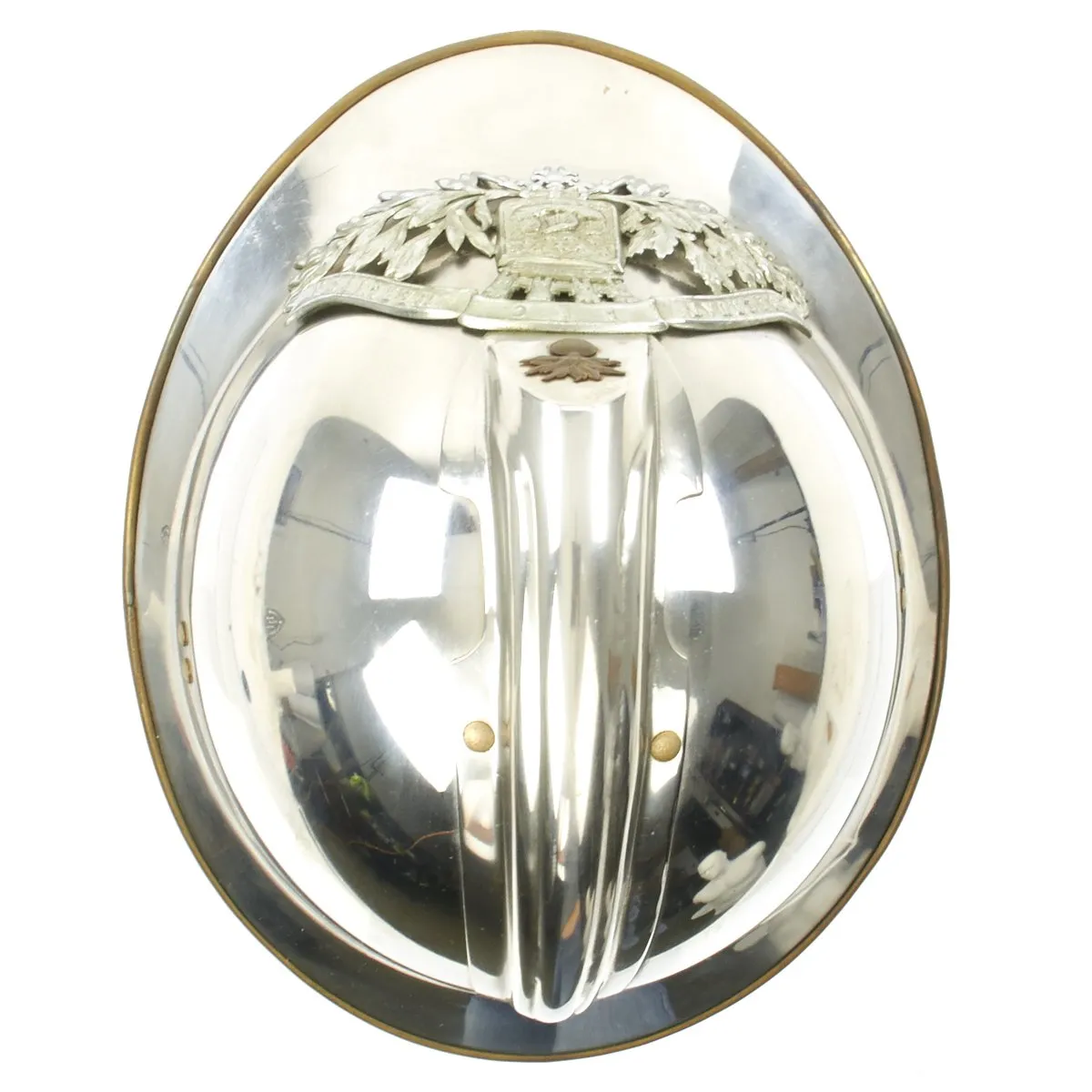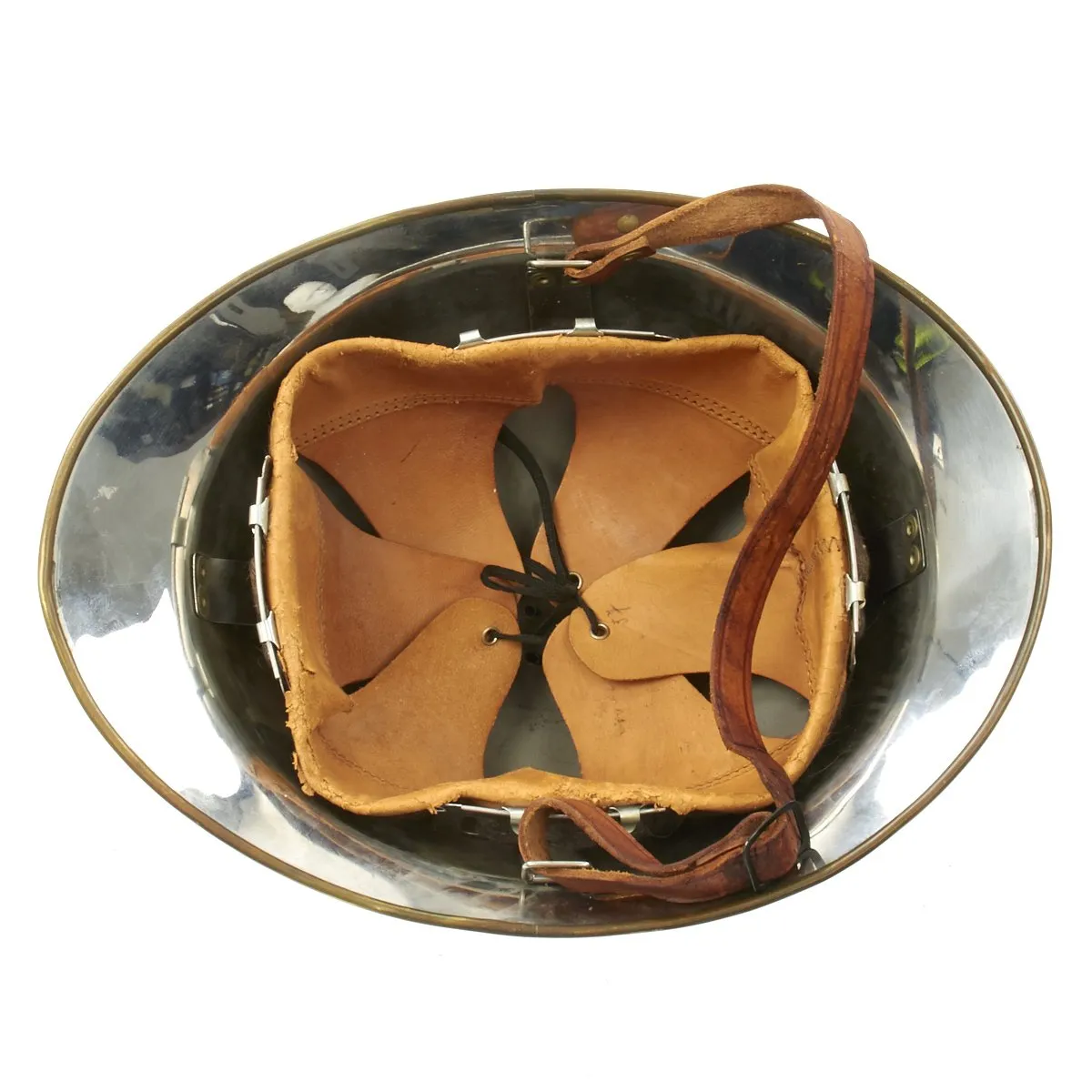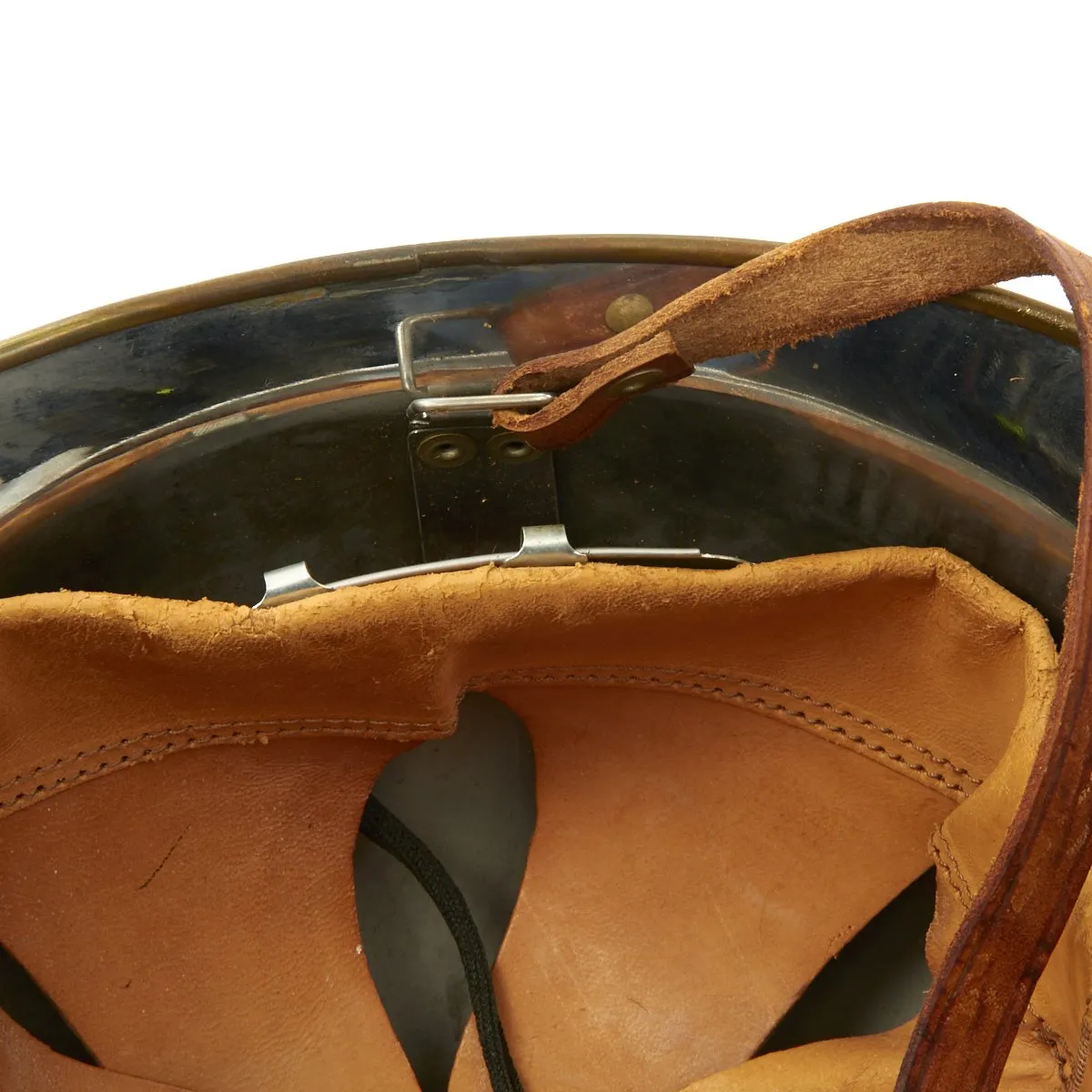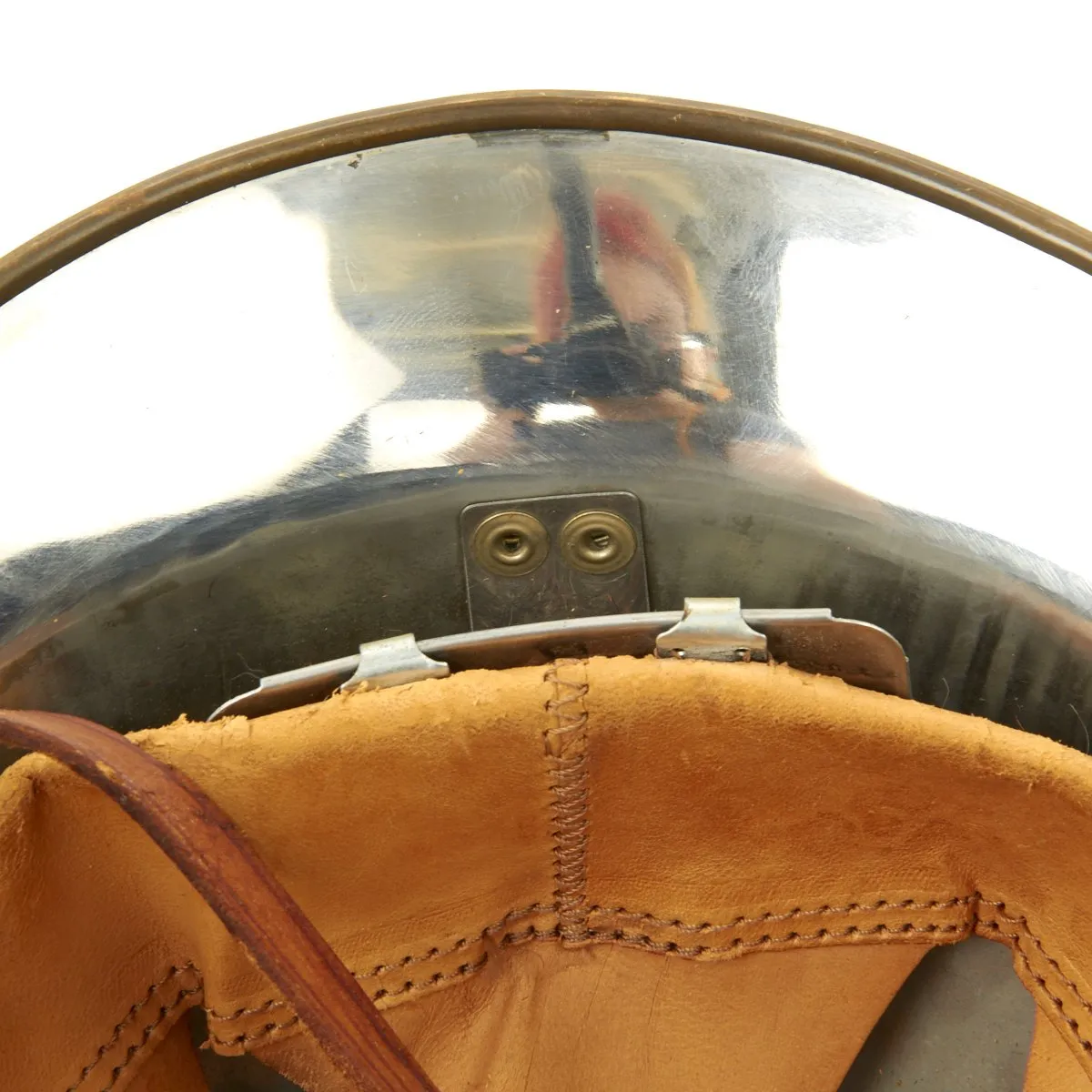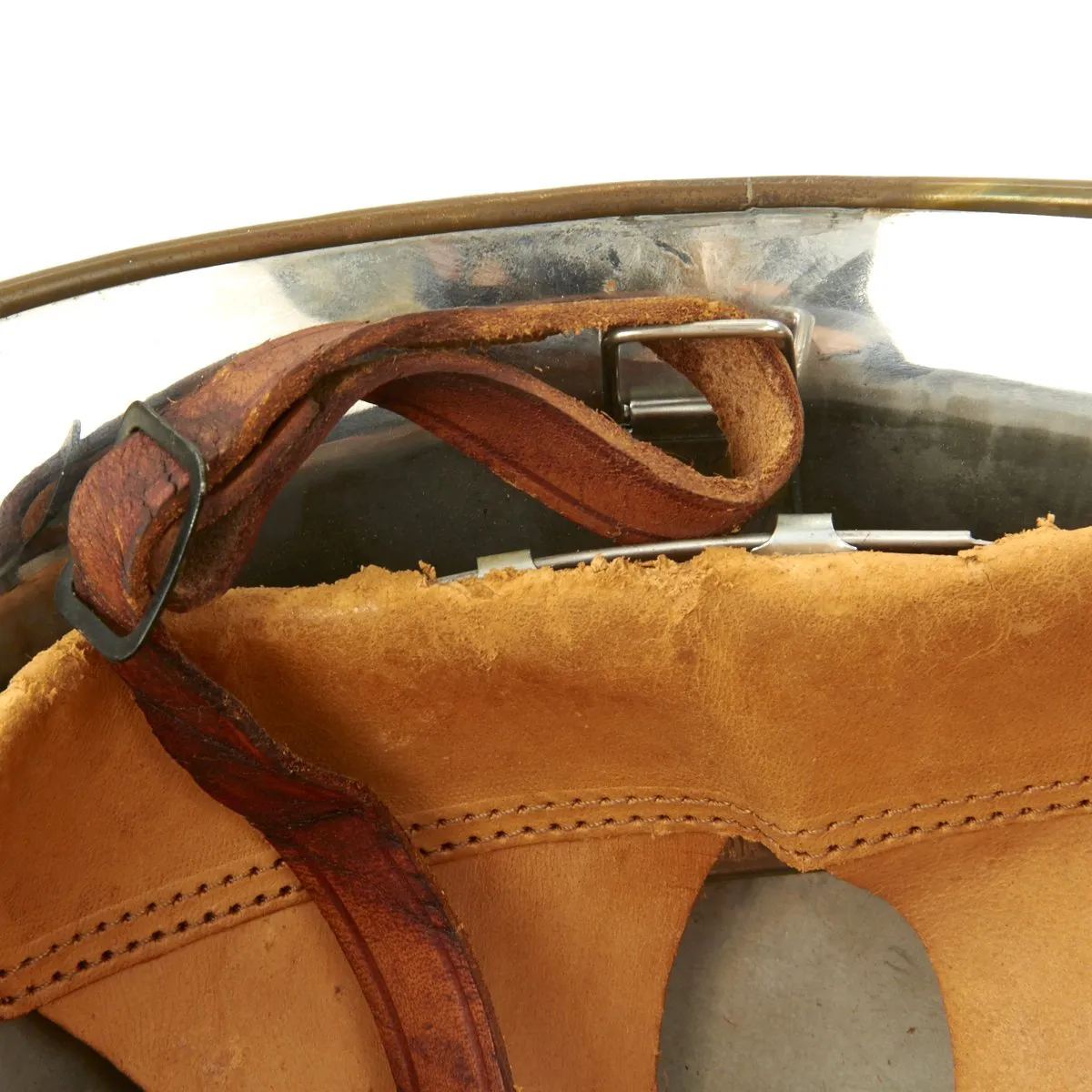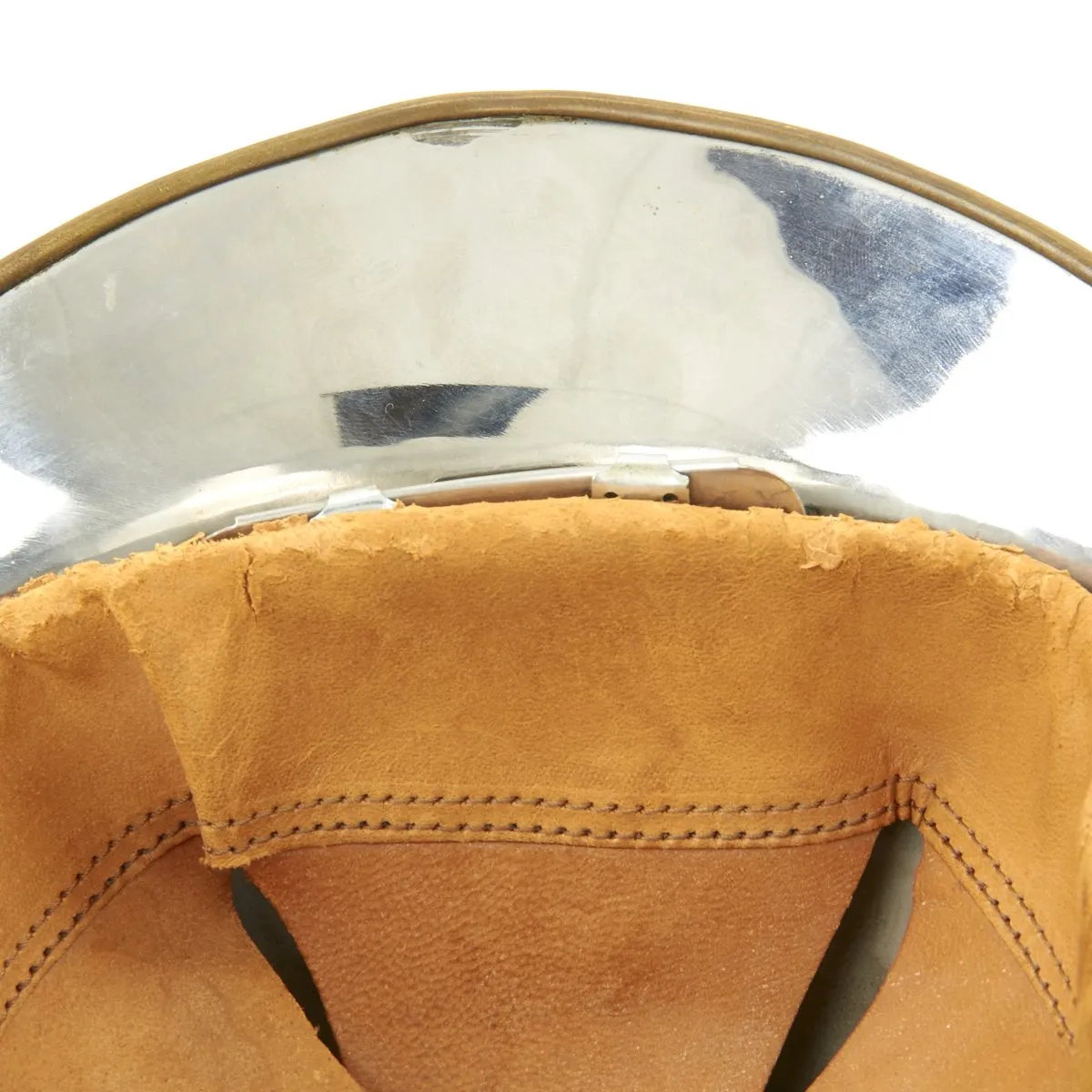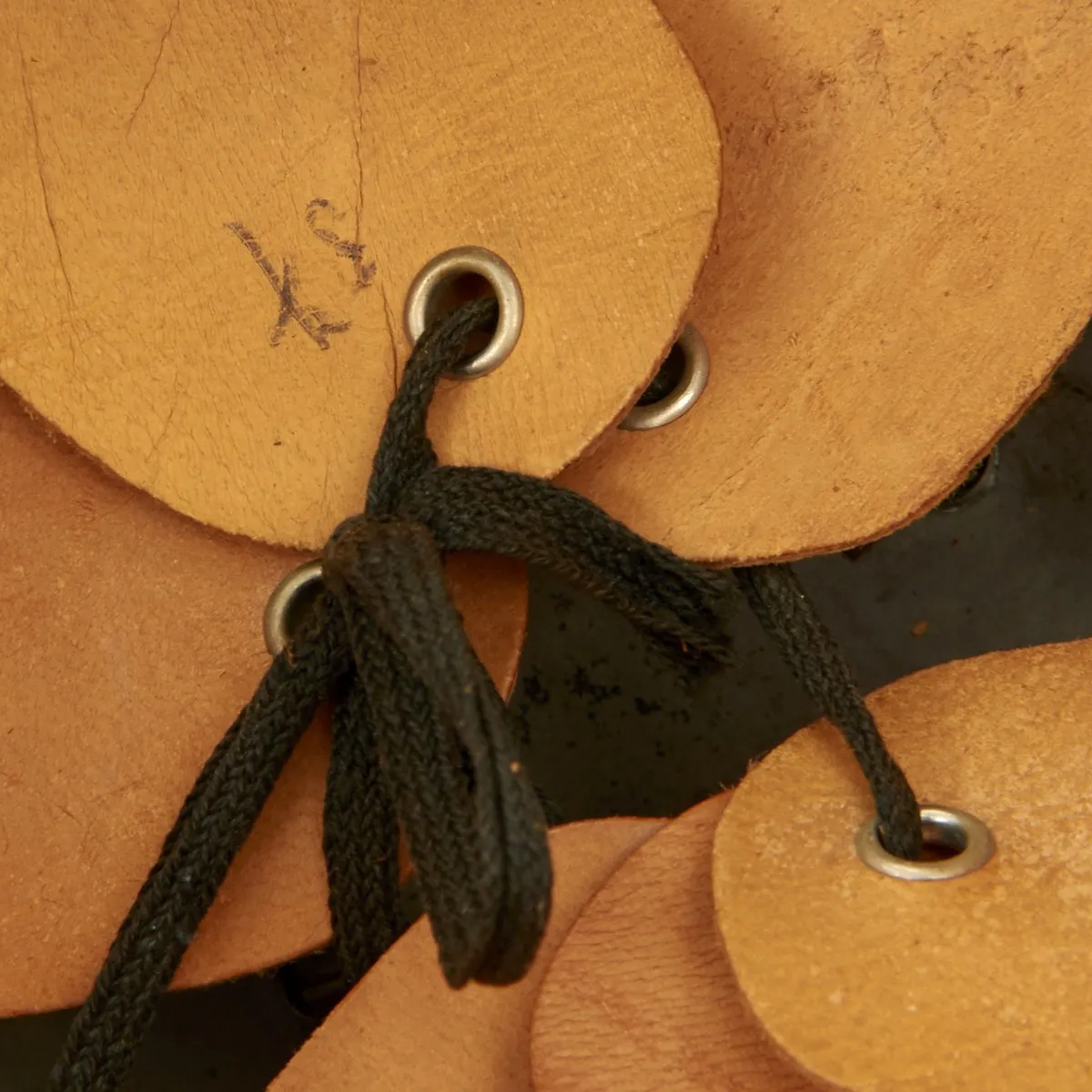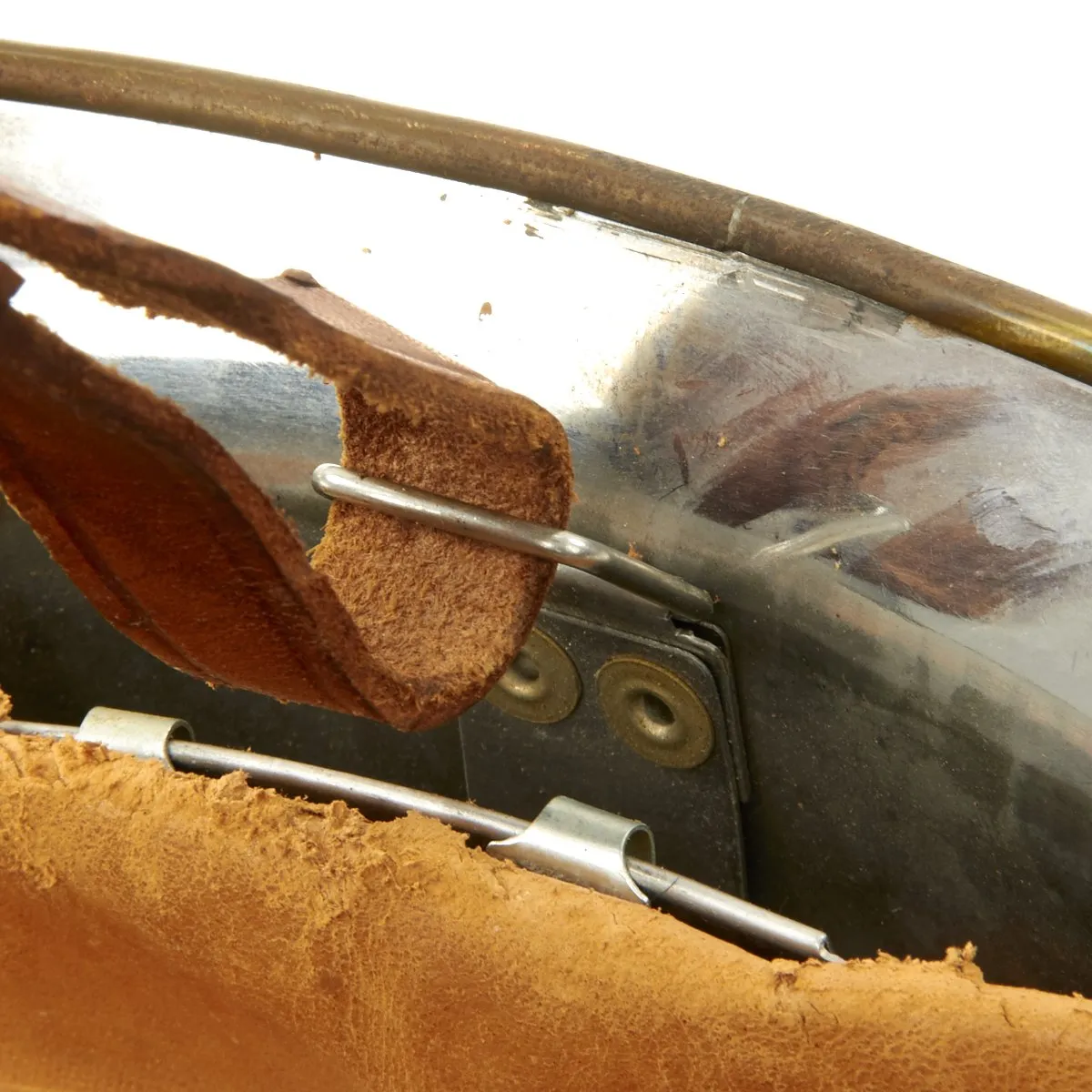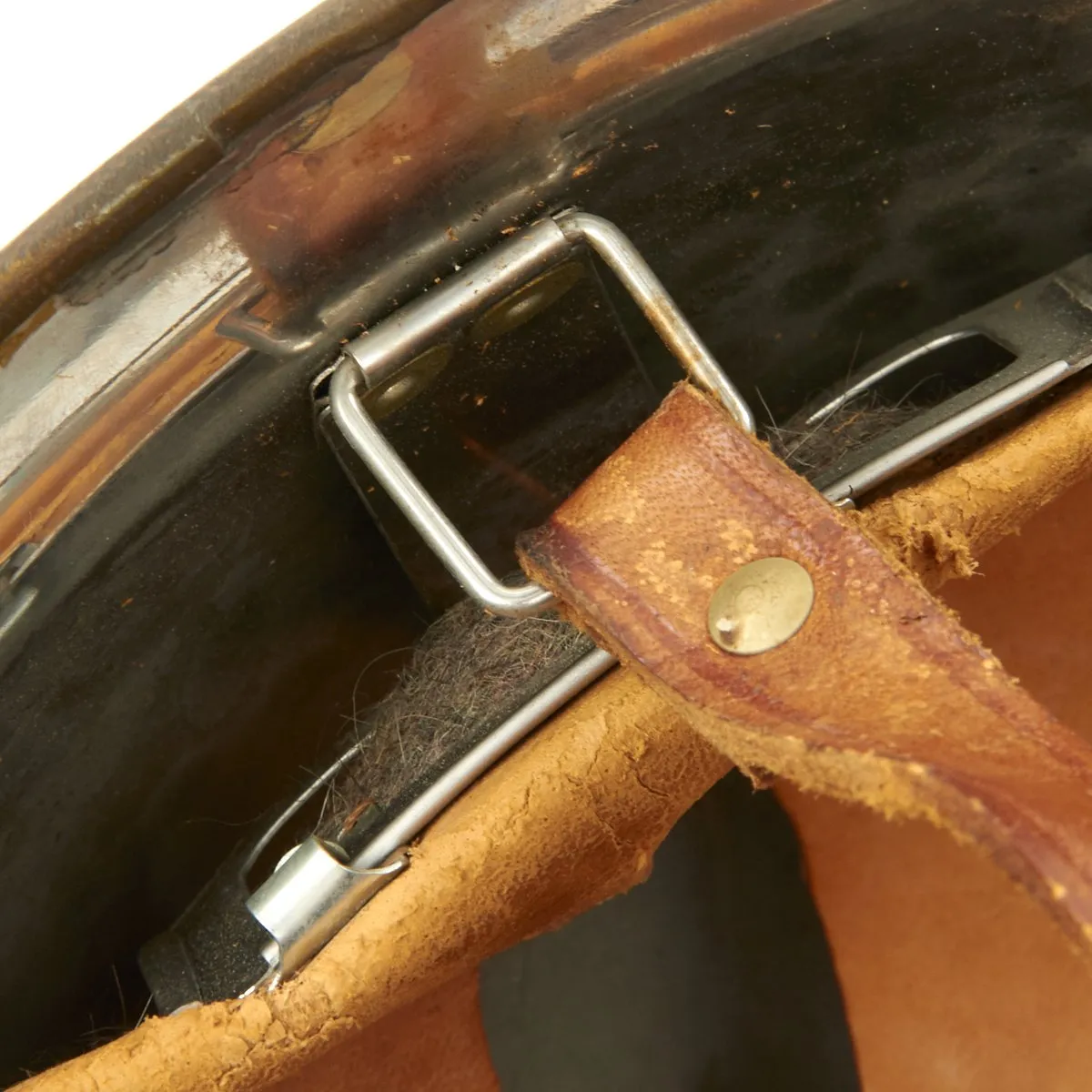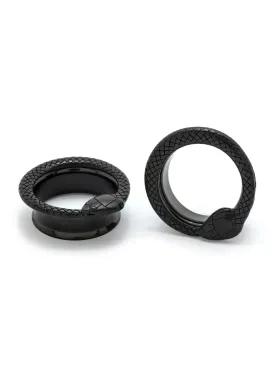Original Item: Only One Available. This is an excellent condition genuine World War II Era model 1926 French "Adrian" Helmet, nickel-plated for firefighting use.
The helmet retains the original nickel-plating well, and is complete with a front helmet plate indicating issue to the City of Paris, the French Capital. The plate itself is quite impressive, 6 1/2 inches wide and 3 inches tall, with the coat of arms of Paris in the center. It is surrounded by leaf and floral patterns, with a banner on top reading FLUCTUAT NEC MERGITUR, the Paris City Motto, which translates to "[She] is tossed [by the waves], but does not sink".
Size is approximately US 7 1/8 (57cm), and marked size 57 in pencil on the leather liner. Features a wonderful complete original leather liner in very good condition, with some deterioration around the edges. Overall condition of the helmet is excellent, with the shell showing almost no dings, dents, or scratches. A very nice example of a hard to find helmet.
In 1926 the Adrian helmet was modified by being constructed of stronger steel and simplified by having the main part of the helmet stamped from one piece of metal, and therefore without the joining rim around the helmet that characterizes the M15. The large ventilation hole under the comb, which had been a weak point of the old design, was also replaced with a series of small holes. The M26 helmet continued in use with the French Army until after World War II, and was also used by the French police up to the 1970s. During the interwar period Belgium began to produce their own domestically made M26 Adrians and exported them around the globe. These helmets can be distinguished from their French counterparts, because they have a slightly different comb and a wider rim. In other countries the Adrian-type helmets were also in use with the fire-fighting units, railway guards or marine infantry (e.g. Japan's SNLF). Adrian helmets are still prized by collectors today.
The M15 Adrian helmet (French: Casque Adrian) was a combat helmet issued to the French Army during World War I. It was the first standard helmet of the French Army and was designed when millions of French troops were engaged in trench warfare, and head wounds from the falling shrapnel generated by the new technique of indirect fire became a frequent cause of battlefield casualties. Introduced in 1915, it was the first modern steel helmet and it served as the basic helmet of many armies well into the 1930s. Initially issued to infantry soldiers, in modified form they were also issued to cavalry and tank crews. A subsequent version, the M26, was used during World War II.




